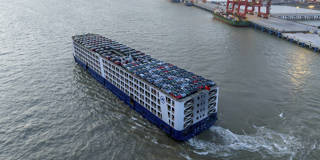China’s latest stimulus plan suggests that while the government acknowledges the need to boost domestic demand, it remains opposed to deeper structural reforms. Addressing the complex global challenges posed by Chinese overcapacity will most likely require additional trade restrictions and innovative policy tools.
NEW YORK – While President-elect Donald Trump’s tariff threats are likely to dominate headlines in the near term, China’s industrial overcapacity remains a larger, core challenge for the global economy and trading system in the coming years. With recently implemented tariffs by advanced and emerging economies, and Chinese responses and macro stimulus, how this issue may evolve over the next few years is becoming clearer – with significant geopolitical implications.

NEW YORK – While President-elect Donald Trump’s tariff threats are likely to dominate headlines in the near term, China’s industrial overcapacity remains a larger, core challenge for the global economy and trading system in the coming years. With recently implemented tariffs by advanced and emerging economies, and Chinese responses and macro stimulus, how this issue may evolve over the next few years is becoming clearer – with significant geopolitical implications.